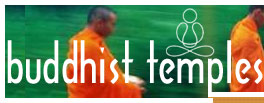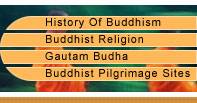Tantric Buddhism is quite different form a number of other Buddhist forms. Also known as Vajrayana, it is considered as one of the three major 'vehicles' (Yanas) of Buddhism, along with Theravada and Mahayana. Read on further to get a brief introduction to Tantric Buddhism...
Vajrayana Buddhism is based, to a certain extent, on the tantras, tantric techniques written in Indian scriptures. It prescribes the technique of 'use the result as the Path'. It means that a person should try to identify with the enlightened body, speech and mind of a Buddha. The form of Buddha one can best relate to is known as yidam (in Tibetan) or ishtadevata (in Sanskrit). For the purpose of self-identification with a Buddha-form, Buddhist tantric techniques make use of symbolism and visualization.
The Tantric Buddhism symbols can come as quite confusing to the person introduced to it for the first time. Most of these symbols are said to have been taken from the Tibetan Buddhism. Given below are the major symbols used in Tantric Buddhism...
The Vajra
One of the important symbols in Buddhist tantra, Vajra seems to be a combination of a weapon and a scepter. It symbolizes the quality of indestructibility. At the time of tantric rituals, Vajra is usually held in the right hand.
The Bell
Bell stands for insight, emptiness, the female aspect. It symbolizes the sound of the Dharma and is used in the rituals to offer sound. At the time of rituals, it is generally held in the left hand.
Other Tantric Symbols :
This article provides an introduction to Tantric Buddhism and its symbols. Tantric Buddhism is also known as
Vajrayana Buddhism.
Buddhist Temples: Schools of Buddhism: Tantric Buddhism
Tantric Buddhism
- The Mala or a rosary of prayer beads - Used for concentration
- Kapala or skullcup - Represents disengagement and conversion of the world
- The small handdrum and the larger Chod-drum
- Swords - Represents intelligence, knowledge, etc
- Kartika or curved knife - Represents impermanence
- Khatvanga or stick - Represents the magical powers or siddhis of a successful tantric practitioner.
- The hook
- The Phurba or ritual dagger - Represents transformation of negative powers on the path to enlightenment.
- Mallets or Hammers - Crushing strength or power
- Bow and Arrow - Represents single pointed concentration
- A Trident - Represents attainment of the three Kayas (or Buddha bodies)
- An Arrow - Represents longevity and prosperity
- The Lasso - Represents constraint of negative forces




